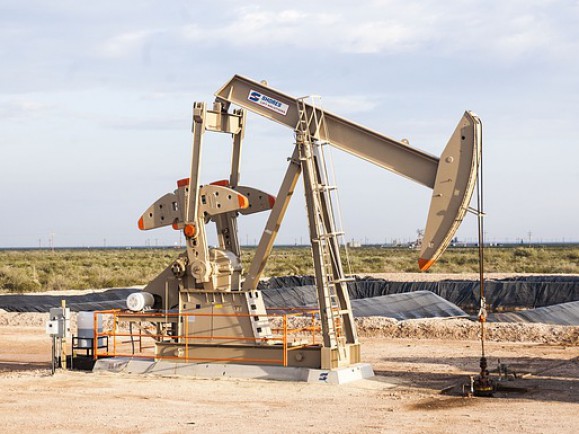
pxhere
"It is not in our competence to declare that OPEC + members have fulfilled their mission, but if our calculations are correct, then really it is very similar to this," the IEA noted in the April report released on Friday. According to the agency, oil reserves in OECD countries in February fell to 2.84 billion barrels, which exceeds the average level of five years by only 30 million barrels. The IEA expects that the OPEC and its partners' desired level of reserves can be reached already in May, while noting that further supply restriction may lead to overheating of the market.
Recall, OPEC and eleven non-cartel countries in late 2016 agreed to reduce oil production by a total of 1.8 million barrels per day from the level of October 2016. The agreement is effective until the end of 2018 and, the IEA as calculated, brings its participants (except Venezuela, whose production has fallen sharply due to the crisis in this country) considerable additional revenues received due to the growth of oil prices (now they are at the maximum since November 2014). In the first quarter, Russia and Saudi Arabia earned more than the others - an additional $ 121 million a day compared with 2017, the agency said. In general, OPEC producers in total have been receiving $ 372 million in excess revenues a day.
According to the IEA, countries outside OPEC fulfilled their obligations under the agreement by 90% in March 2018 after reaching 82% in February. On average, for the entire period of the deal, the level of compliance by countries outside OPEC with their obligations was 86%. OPEC countries in March fulfilled the agreement by 163% due to a strong fall in production in Venezuela and Africa.
As for the actual world forecast of oil demand, the IEA retained its expectation of its growth in 2018 by 1.5 million barrels per day. Thus, the demand for oil in the world this year will be 99.3 million barrels per day, having increased from the level of 2017 in the amount of 97.8 million barrels. The IEA's forecast for the growth of supply from non-OPEC countries also remained unchanged - plus 1.8 million barrels per day to the level of 2017 (up to 59.9 million barrels). "The increase in supply from non-OPEC will accelerate within a year, as the US is stepping up its production, and Brazil, Canada and the UK are launching new projects," the IEA said. In general, in the first three months of 2018, the oil market moved to the balance sheet - with a demand of 98.1 million barrels per day, the total supply of production was 97.9 million (see chart).
source: reuters.com
Recall, OPEC and eleven non-cartel countries in late 2016 agreed to reduce oil production by a total of 1.8 million barrels per day from the level of October 2016. The agreement is effective until the end of 2018 and, the IEA as calculated, brings its participants (except Venezuela, whose production has fallen sharply due to the crisis in this country) considerable additional revenues received due to the growth of oil prices (now they are at the maximum since November 2014). In the first quarter, Russia and Saudi Arabia earned more than the others - an additional $ 121 million a day compared with 2017, the agency said. In general, OPEC producers in total have been receiving $ 372 million in excess revenues a day.
According to the IEA, countries outside OPEC fulfilled their obligations under the agreement by 90% in March 2018 after reaching 82% in February. On average, for the entire period of the deal, the level of compliance by countries outside OPEC with their obligations was 86%. OPEC countries in March fulfilled the agreement by 163% due to a strong fall in production in Venezuela and Africa.
As for the actual world forecast of oil demand, the IEA retained its expectation of its growth in 2018 by 1.5 million barrels per day. Thus, the demand for oil in the world this year will be 99.3 million barrels per day, having increased from the level of 2017 in the amount of 97.8 million barrels. The IEA's forecast for the growth of supply from non-OPEC countries also remained unchanged - plus 1.8 million barrels per day to the level of 2017 (up to 59.9 million barrels). "The increase in supply from non-OPEC will accelerate within a year, as the US is stepping up its production, and Brazil, Canada and the UK are launching new projects," the IEA said. In general, in the first three months of 2018, the oil market moved to the balance sheet - with a demand of 98.1 million barrels per day, the total supply of production was 97.9 million (see chart).
source: reuters.com


















